Scientologists Caused The Vinyl Revival
and L. Ron's space jazz

Have you ever wondered how vinyl records became cool again? Well, I have. And never once did I picture Tom Fucking Cruise.
Until, all of a sudden, I did.
Notes From a Punk
Tucked into a corner pew in Brooklyn’s Jalopy Theater, I listened in awe as a short bearded man in a black beanie shattered everything I knew about the history of Western music.
Eric Isaacson is the founder of Mississippi Records, a label and record shop based in Portland, Oregon that preserves the sounds of artists overlooked in mainstream music. In the past 20 years, Mississippi has put out over 200 original records; independent music that spans “genres, religions, and timelines.”
So, it’s fitting that Isaacson was now spending 90 minutes presenting, dissecting, and connecting factoids relatively hidden from view.
For example: Did you know that Puritans devoted their earliest days in America to running a musicless society? Or that after inventing the phonograph, Thomas Edison was the first person to commercialize music, and ended up being a huge dick with god-awful taste? (Look up “laughing records.”)
Unsurprisingly, Isaacson is distrustful of commercial industries, corporations, and anything you’d probably consider “The Man.” In other words, he’s a punk — self ascribed. And thank god. Punks are devilishly good at deconstructing tales we end up turning into “truth.”
After dissing Edison, Isaacson continued to blow my mind. What came next nearly prompted me to spit hazy IPA onto a doula’s yoga mat in the conjoining pew.
Scienfuckintologists
The Jalopy audience couldn’t help but giggle at the slide above, causing Isaacson to look up from his notes and awkwardly grin at the room of music nerds.
“I swear this is real, not a joke,” he said.
According to the man in the black beanie, it’s not just hipsters like me who have ushered in a new wave of vinyl sales — it’s also the The Church of Scientology.
Yup. The Scienfuckintologists. Tommy Cruise. John “Grease Fever” Travolta. Doug E. Fresh. Isaac Hayes. Chick Corea. Edgar Winter. Elvis’s daughter. And of course: the man, the myth, the emotionally disturbed legend, L. Ron Hubbs.
As Isaacson continued to explain how Scientologists saved the industry, I could hear the doula next to me using patterned breathing to quietly calm her heartbeat.
Direct Metal Mastering For Dummies
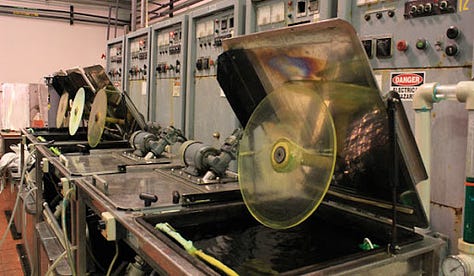


To make sense of Isaacson’s claim that Scientology saved a dwindling record industry, I had to learn a bit about Direct Metal Mastering, or DMM, which relies on “electroplating” — a process used to create a master record pressing on metal.
Based on information I tracked down online, I’ve figured out that electroplating is a niche skill practiced by a small, specialized field of lathers who “electroplate” copper onto a steel disc — a process I remember Isaacson describing as “more alchemy than science.”
By running an electric current through a heady mixture of chemicals, the desired audio details — i.e. the songs — are formed directly onto the copper surface. From that first disc — deemed “the mother” — hundreds of vinyl records can be produced and sold and listened to in the privacy of our homes (or da club).
In other words, DMM is a somewhat lost art practiced by modern day alchemists.
Newer lathers exist, of course, but many of the original experts are aging out of their field. Equipment, too, is limited. As of 2009, there were only seven publicly-usable DMM cutting facilities left in the world. The U.S. lost its last commercial DMM cutting spot, Europadisk LLC, in 2005.
That year, for $72,500, Europadisk’s last DMM lathe was sold at auction to none other than the Church of Scientology.
Coincidence?
I think not.
Hidden Bunkers


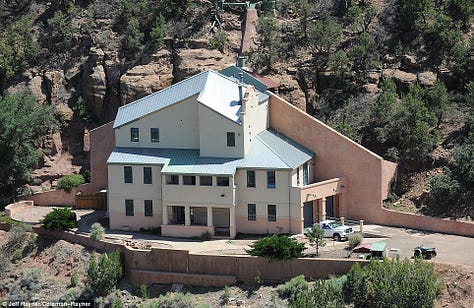
If we were all wiped out in a nuclear holocaust, would the history of our time survive us? L. Ron thought so.
Before he died in 1986, Lafayette Ronald Hubbard inspired his followers to preserve his teachings (and more) in a series of hidden bunkers scattered across California and New Mexico. He believed that after the human race was destroyed, extraterrestrial life would eventually notice the aerial symbols his disciples carved into the Earth, uncover the materials inside, and spread Scientologist doctrine into the furthest corners of the universe.
In a New Mexican ghost town named Trementina, a sect of Scientology called The Church of Spiritual Technology (CST) has “more than 135 tons of archival books, stainless steel plates and nickel-plated records” stored within “2,300 titanium capsules,” which are housed in “calamity-proof vaults.”
Records from the U.S. Internal Revenue Service show that Scientologists spent $13 million in 1992 while attempting to preserve Hubbard’s work on 1.8 million stainless steel discs and 187,000 electroplated records.
It makes me wonder how much of that money indirectly impacted the eventual resurgence of vinyl sales. But, unfortunately, I’ve been unable to uncover any specific data to support the claim.
In his presentation, however, Isaacson told us that he’d spoken with lathers across the globe who said it was the Church of Scientology’s investment in metal-plated records as the main reason they were able to keep working in their endangered industry.
Without the Church’s peculiar desire to evangelize Space, partnered with a heavy dose of aesthetic nostalgia, it seems that lathers, like some artists on Mississippi Records, could have easily become a thing of the past.
Cue “cult music.”
L. Ron’s Space Jazz
Beyond the preservation of L. Ron’s scripture, the Scientologists also spent millions making sure their extraterrestrial friends encountered a special sonic treat.
That’s right. L. Ron’s efforts manifested in original music; at least three deranged albums he recorded, composed and/or produced are stored within the bunkers.
Power of Source (1974)
“It’s like Afro-Cuban music on crystal meth” - review on Discogs
As you can probably tell from this album cover, L. Ron Hubbard (in the flat-brim and headphones) wasn’t the most adept man behind the mixer. But that didn’t stop him from recording The Apollo Stars’ debut album — a high-octane Afro-Jazz record birthed from a band of young Scientologists sailing around the Mediterranean with L. Ron and his inner circle.
The “Sea Org” was Hubbard’s answer to escaping the U.S. government’s investigations of him in the late 1960s. In 1967, he purchased a rusty fleet of WWII-era ships and moved his operations offshore. When the mayor of Madeira — an archipelago in the Atlantic — asked for some live entertainment from the bunch of Scientologists crashing in his town, a group of young musicians came forward.
“I was scared shitless the first day I met [L. Ron Hubbard], because I thought he could read minds,” saxophonist Neil Sarfati says, reflecting on his time in the Sea Org.
According to Sarfati, The Apollo Stars were immediately tasked with playing for screaming crowds of 10,000 people in medieval town squares, receiving “standing ovations all over Europe.”
However, the band was plagued by Hubbard’s unpredictable temper and rampant criticism. Their raw talent was never shaped into something whole. Which is clear when listening to “Power of Source,” a “terrible album” (according to Sarfati) that Hubbard insisted on producing and recording despite having no prior experience.
Listening to the record, I was impressed by some deeply original moments from the guitar and saxophone, but it’s hectic and explosive in ways that make you wonder if these young men, soon to flee the Church, were rushing to escape Hubbard’s menacing glare.
Space Jazz (1982)
“Comes off as a cross between a 1970s porn soundtrack and a feature length version of Tom Green's ‘Daddy Would You Like Some Sausage?’” - review on Discogs
Fun Fact: This L. Ron record might be the first soundtrack ever made for a book.
Released on the Church’s label, BPI Records, “Space Jazz” is meant to accompany Hubbard’s “Battlefield Earth,” a sci-fi novel set in the year 3000, in which an alien race called the Psychlos discover a space probe that leads them to Planet Earth.
To me, the album sounds like someone ripped off Mort Garson’s “Plantasia” for a gaggle of toddlers.
Imagine musical theater with female shrieking, extraterrestrial voices, chanting, laser zaps, narratorial musings, and a cacophony of goofy instrumentals — with renowned jazz pianist Chick Correa featured on the Mini Moog synthesizer.
The Road to Freedom (1986)
“The perfect dissemination tool” - advertising message from The Church of Scientology
“The Road to Freedom” is the last album of music Hubbard made before he died.
It’s a blend of songs about auditing, utilizing your e-meter and how to be a good Scientologist. More importantly, it’s the only record on which L. Ron actually sings, offering up demented lounge-vocals among a strange bunch of “friends,” including John Travolta and Sylvester Stallone’s dad, Frank.
The title itself reflects a phrase used in the Church regarding spiritual liberation. At one point on the album, Travolta croons, “Reality is me, reality is you. Yeah, yeah, yeah…”
Mission Earth (1989)
“This music sounds like the sort of thing a low-budget science fiction film would use as background club music” - review on YouTube
Finally.
It’s hard to believe that 70s albino rocker Edgar Winter went from recording feel-good rock ‘n’ roll anthems like “Free Ride” and “Hanging Around” to taking posthumous directions from L. Ron Hubbard for a cheesy sci-fi soundtrack to another one of the con-man’s novels…but that’s evidently what happened.
According to Wikipedia, before he died, Hubbard left “detailed instructions and audio tapes for the musicians and producers to follow when making this album.”
Winter thought of “Mission Earth” as “both a return to rock’s primal roots and yet highly experimental.” But the public didn’t dig it. The record label, Rhino, predicted to sell 800,000 records, but only sold 15,000 upon its release.
Listening to these four disparate albums, I noticed one commonality. Despite a deftly composed rush of excitable sounds — a whole lotta beeboops and zeepzops and bangbangs — L. Ron’s sonic creations have no soul.
And, unfortunately for Scientologists everywhere — in the words of the great Neil Young — even Richard Nixon has got soul.




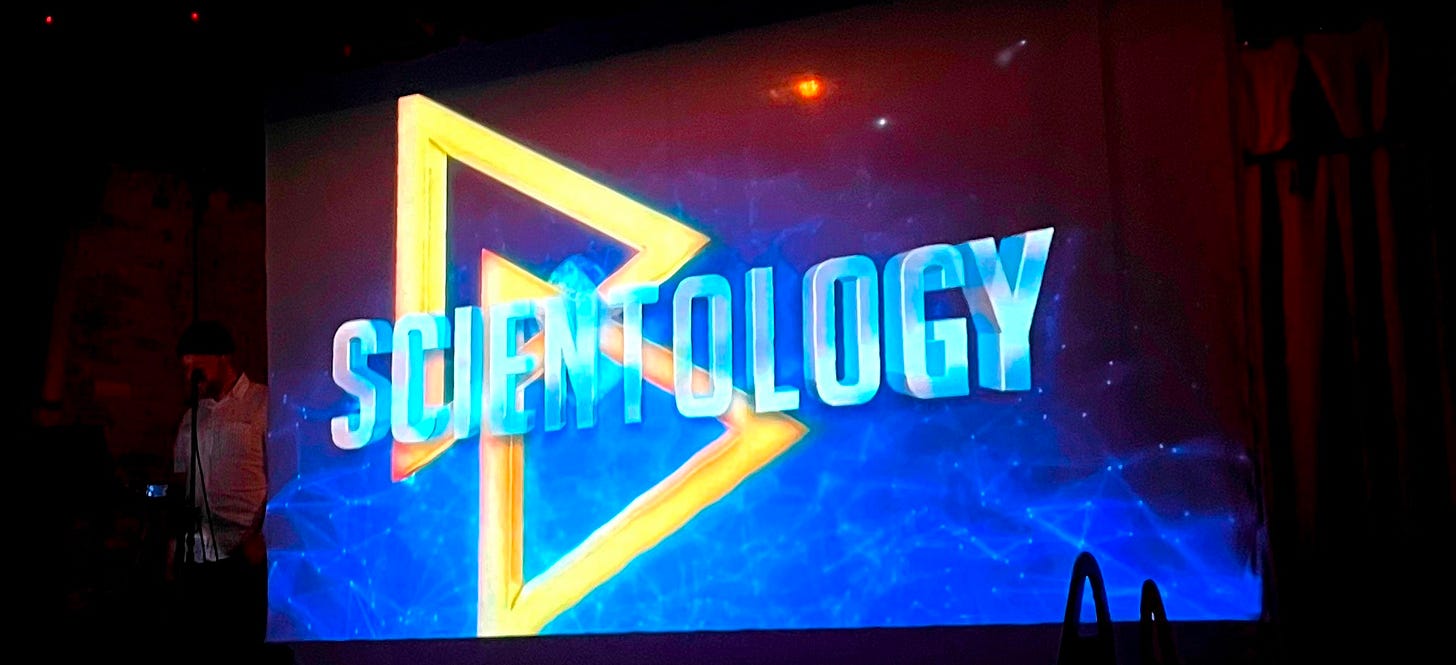
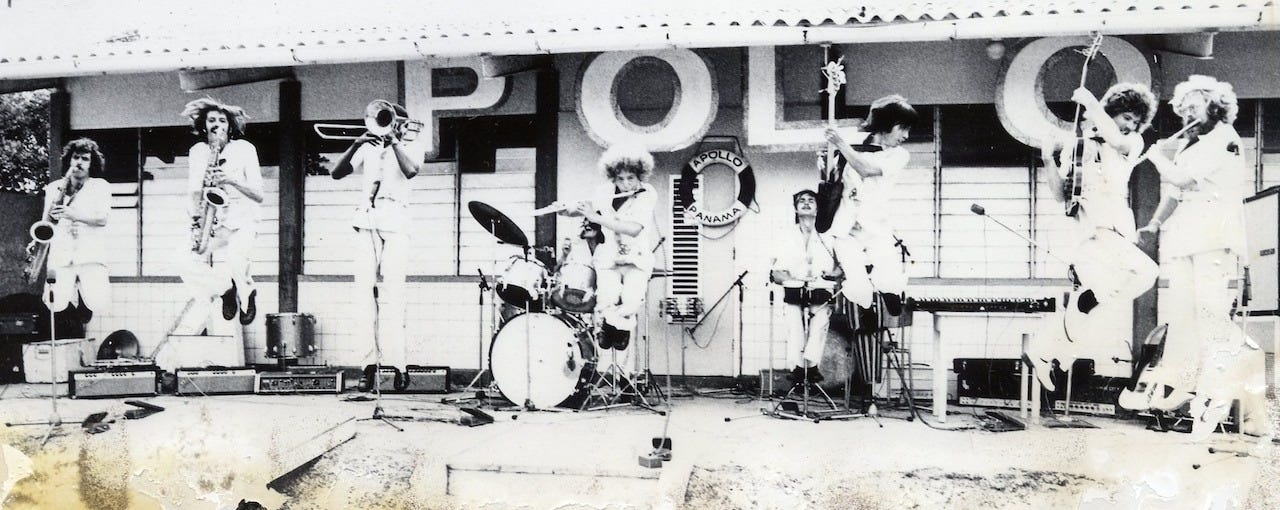
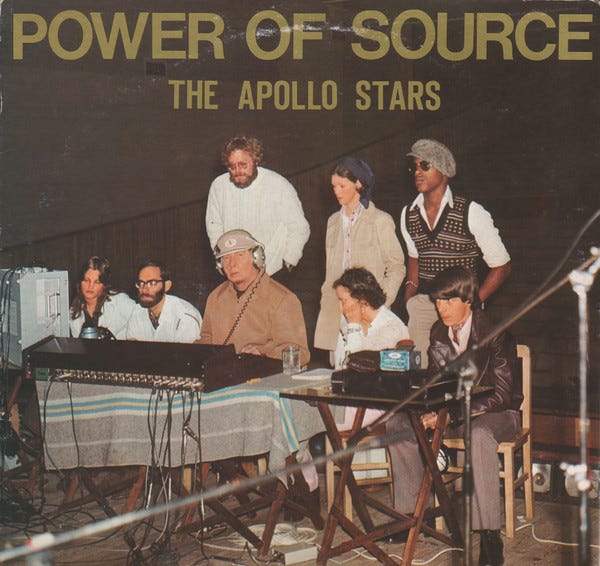
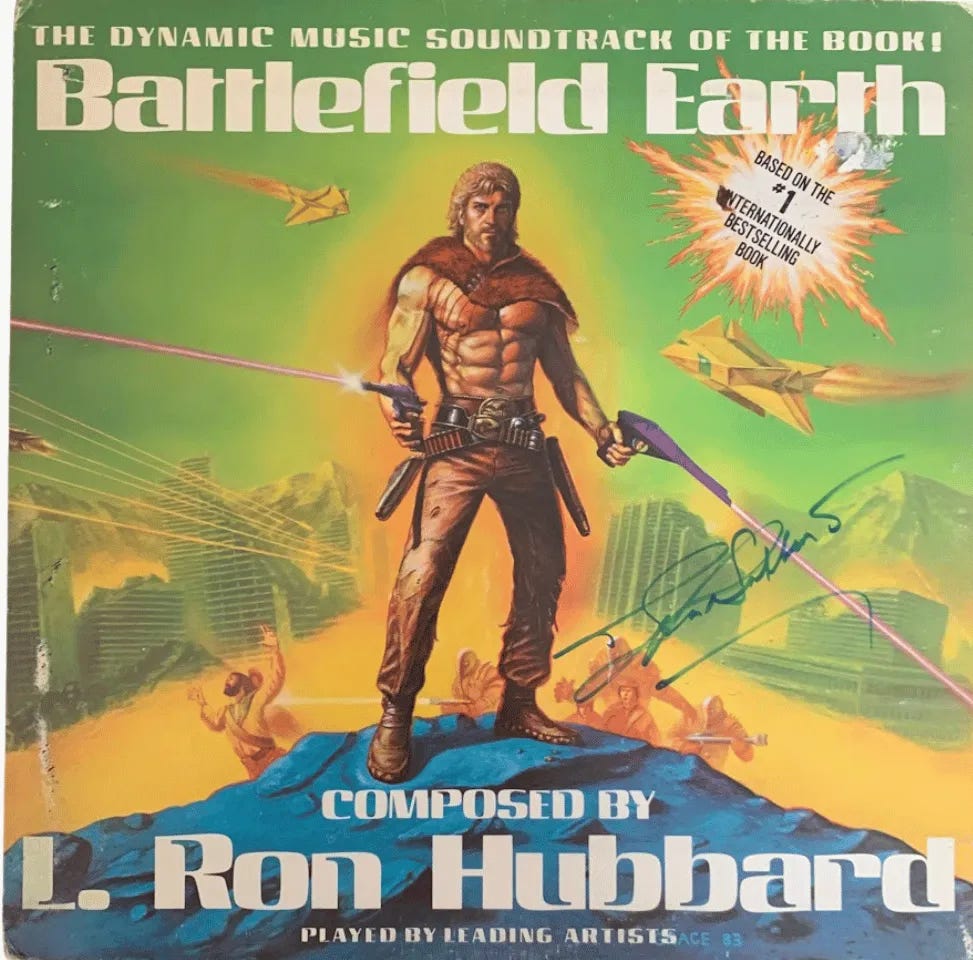
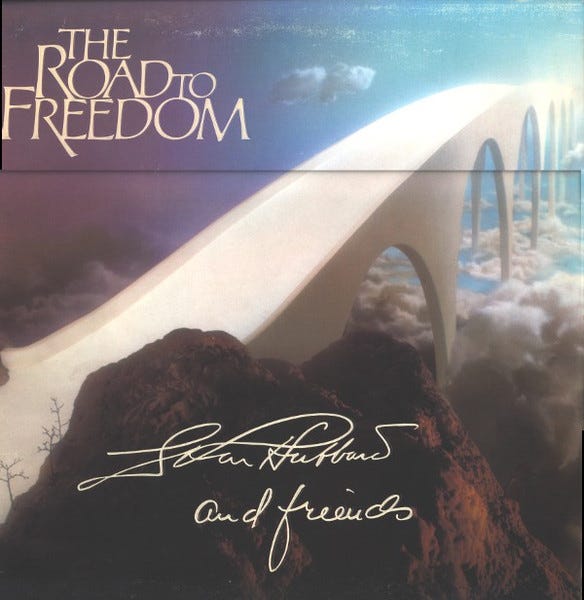

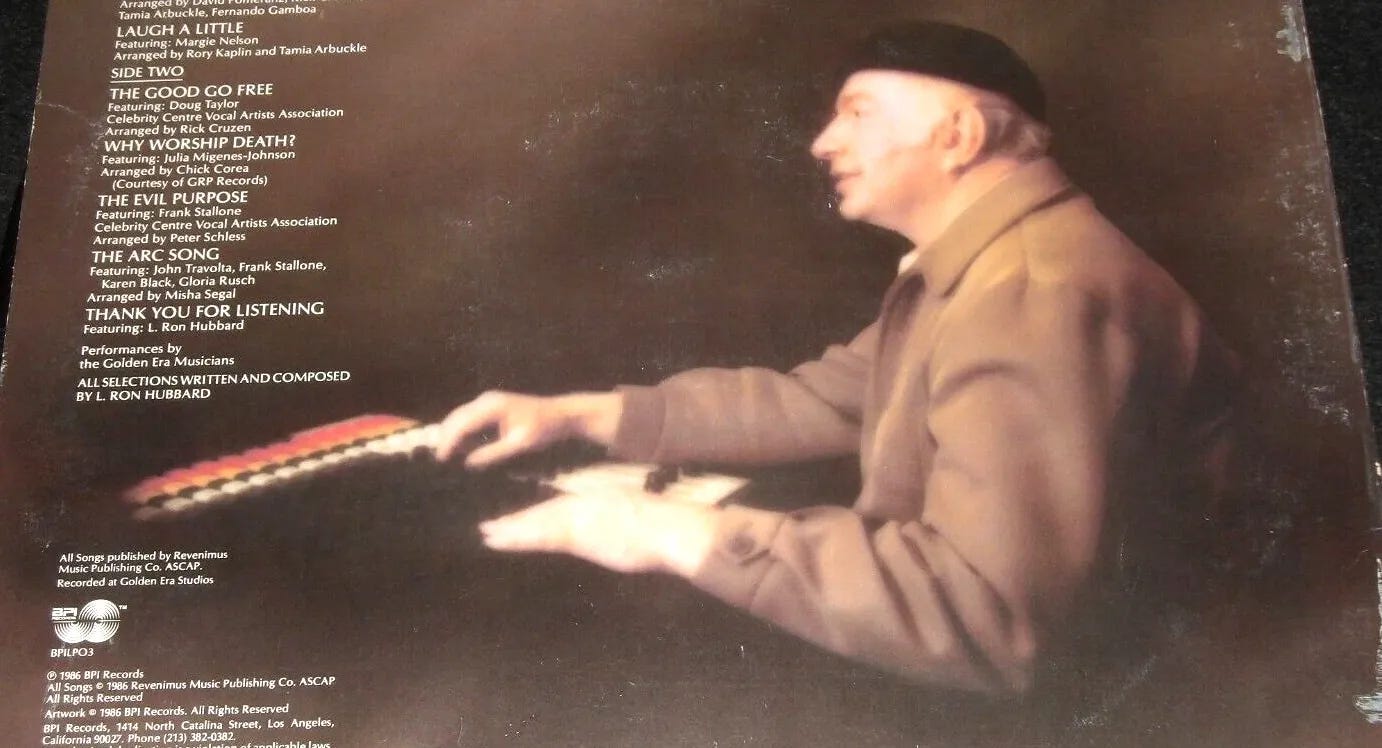
🤯
What a wacky tale!